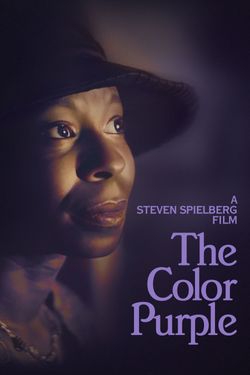
By Aiden Camp
Staff Writer
From destroying the boundaries of distance, to painting a bittersweet story of self discovery and sisterhood, “The Color Purple” displays profound beauty in its story telling of sisters Celie and Nettie. Directed by Steven Spielberg and based off of the novel “The Color Purple” by Alice Walker, this film highlights a southern black woman and her struggles with race, sexism, and violence.
From a young age our protagonist Celie has a very limited support system- found only in her sister Nettie. Their relationship is symbolized in small hints of purple flowers throughout the background, a representation of joy and peace they find in one another.
Nettie is portrayed as Celie’s superior from outsiders, favoring her beauty and intelligence, while Celie is described as ugly throughout the film and even regarded as a maid in her household. This can be seen when the girls’ father refuses to marry Nettie off to Celie’s later husband “Mister ‘’ due to his own attraction and possessiveness to her.
Their father compromises to give Mister possession of Celie due to her complacent nature. Upon the film’s initial release it was faced with controversial feedback with claims the film inappropriately stereotyped black men as violent or villainous with its repeated depictions of abuse and reference to incest.
While the film received mixed responses, these themes were equally as described to be important to the experiences of what many black women in the community experienced throughout history.
Celie, played by 29-year-old Whoopie Goldberg, is astoundingly written throughout the film. As an audience member, we are lost and invested in the sister’s struggles following Celie as they look to the future, and equally devastated when they are inevitably pulled apart again.
The purple flowers wink in and out of view as the sisters are torn apart in tears- drawing out a mourning as we see the joy symbolized in Celie slowly dissipate.
While her conditioning into her new domestic life is brutal I have never seen a more beautiful depiction of a character’s descent into ‘dullness.’
Celie loses her fight, loses her hope to hear from her sister again, and travels her day to day in the backgrounds of the rest of the cast as she continues to face violence and verbal abuse by Mister and his children. Celie’s dialogue is reduced to nothing but a few words for a large portion of the film as she takes on the role of the ‘complacent wife’ in order to survive.
The audience comprehensively understands why Celie has become this way, and in this role her interactions with the rest of her family become more impactful as she is an active observer in her own life. When her family speaks to her we see her taking in their words and piecing together her own identity- deciding what would and would not define her.
Mister and Celie’s power dynamic begins to shift with her discovery of self-identity and Mister’s revealed deceit. Celie finally learns how to fight.
A notion that had always been described by her as foreign. “I’m poor, Black, I may even be ugly, but dear God, I’m here! I’m here!” she declares. With each scene the flowers begin to return and the audience sees Celie developing her own happiness, an important message and demonstration of her drive to escape the cult of domesticity she has consistently been trapped into.
Celie and her life are immortalized on screen, telling the tale of a black woman’s drive to fight for her life in a world pinned against her at every corner.
With the film’s recent re-adaptation in October 2023, it is worth a watch to appreciate the predecessor to such a wonderfully poignant movie.
The driving force of this feature film is found in highlighting the struggles African American women faced even in their own households, and reminding the audience of their presence in history which is often repressed behind the perpetuation of the patriarchy of the 19th century. In sum,
The Color Purple (1985) is an impactful message of female empowerment through sexism, violence and race- a moving movie classic that is sure to draw out a few tears